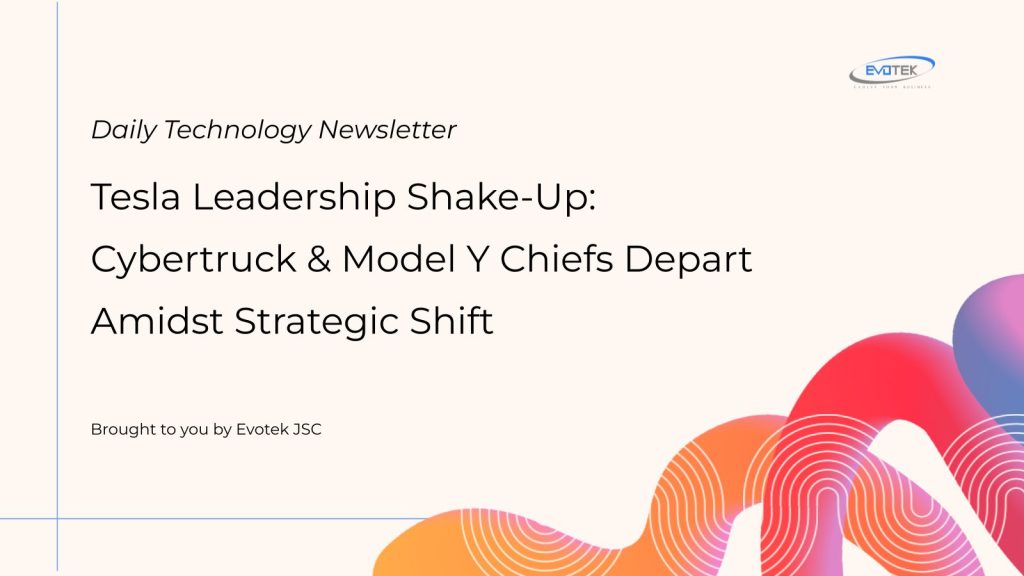Tesla is currently navigating a significant leadership transition, with two prominent executives responsible for its highly anticipated Cybertruck and best-selling Model Y programs announcing their departures. These high-profile exits come as the electric vehicle giant signals a pivotal shift in its core business focus, moving beyond traditional automotive manufacturing towards advanced AI, robotics, and autonomous technology.
Key Program Managers Announce Exits
The latest shake-up sees the departure of Siddhant Awasthi, who spearheaded the Cybertruck and Model 3 programs, and Emmanuel Lamacchia, the Model Y vehicle program manager. Both executives confirmed their exits on Sunday, following extensive careers at Tesla.
Awasthi, after an impressive eight-year tenure, shared his reflections on LinkedIn. He highlighted a “thrilling journey” that included scaling up Model 3 production, contributing to Gigafactory Shanghai, developing new electronic architectures, and, notably, delivering the “once-in-a-lifetime Cybertruck” – all before the age of 30. His departure marks the end of an era for a key figure instrumental in bringing some of Tesla’s most iconic vehicles to fruition.
Similarly, Lamacchia, also an eight-year veteran, announced his departure. He played a crucial role in the unprecedented success of the Model Y, Tesla’s top-selling vehicle globally with over one million units delivered last year. On LinkedIn, Lamacchia underscored a remarkable achievement: “Leading the All-New Model Y launch was the highlight: converting all 4 factories across 3 continents in just 2 weeks. Something that had never been done before in the auto industry.” Neither executive has publicly disclosed their next professional endeavors.
A Trend of Executive Departures at Tesla
These recent exits are part of a broader pattern of senior leadership changes within Tesla’s ranks. In recent months, several other high-ranking individuals have moved on, including:
- Omead Afshar, a long-standing close advisor to Elon Musk, who oversaw North American and European sales and manufacturing operations, left in June.
- Troy Jones, Tesla’s vice president of sales for North America, departed in July after 15 years with the company.
- Drew Baglino, former senior vice president of powertrain and energy engineering, exited earlier in 2024 to establish his own startup in the energy sector.
The turnover extends beyond the vehicle division. Milan Kovac, who led Tesla’s robotics division, also recently departed. Furthermore, the reported dissolution of the automaker’s Dojo supercomputer project led to the exit of its head, Peter Bannon, according to Bloomberg.
Tesla’s Strategic Pivot Towards AI and Robotics
This series of leadership changes unfolds during a challenging period for Tesla, marked by slowing electric vehicle sales. Concurrently, the company, under Elon Musk’s direction, is actively repositioning itself, with a clear focus away from being solely an EV manufacturer. Musk has publicly stated that Tesla’s future value will largely stem from “moonshot projects” such as robotaxis and the Optimus humanoid robot.
Musk has emphatically indicated that Optimus, the humanoid robot, could eventually account for as much as 80% of Tesla’s valuation. This bold vision suggests a future where the company prioritizes artificial intelligence, autonomous systems, and robotics over the creation of new mass-market vehicles with traditional steering wheels. This strategic reorientation, alongside the competitive landscape and shifting market demands, undoubtedly creates a dynamic environment influencing executive decisions and the overall direction of the company.

 日本語
日本語 한국어
한국어 Tiếng Việt
Tiếng Việt 简体中文
简体中文